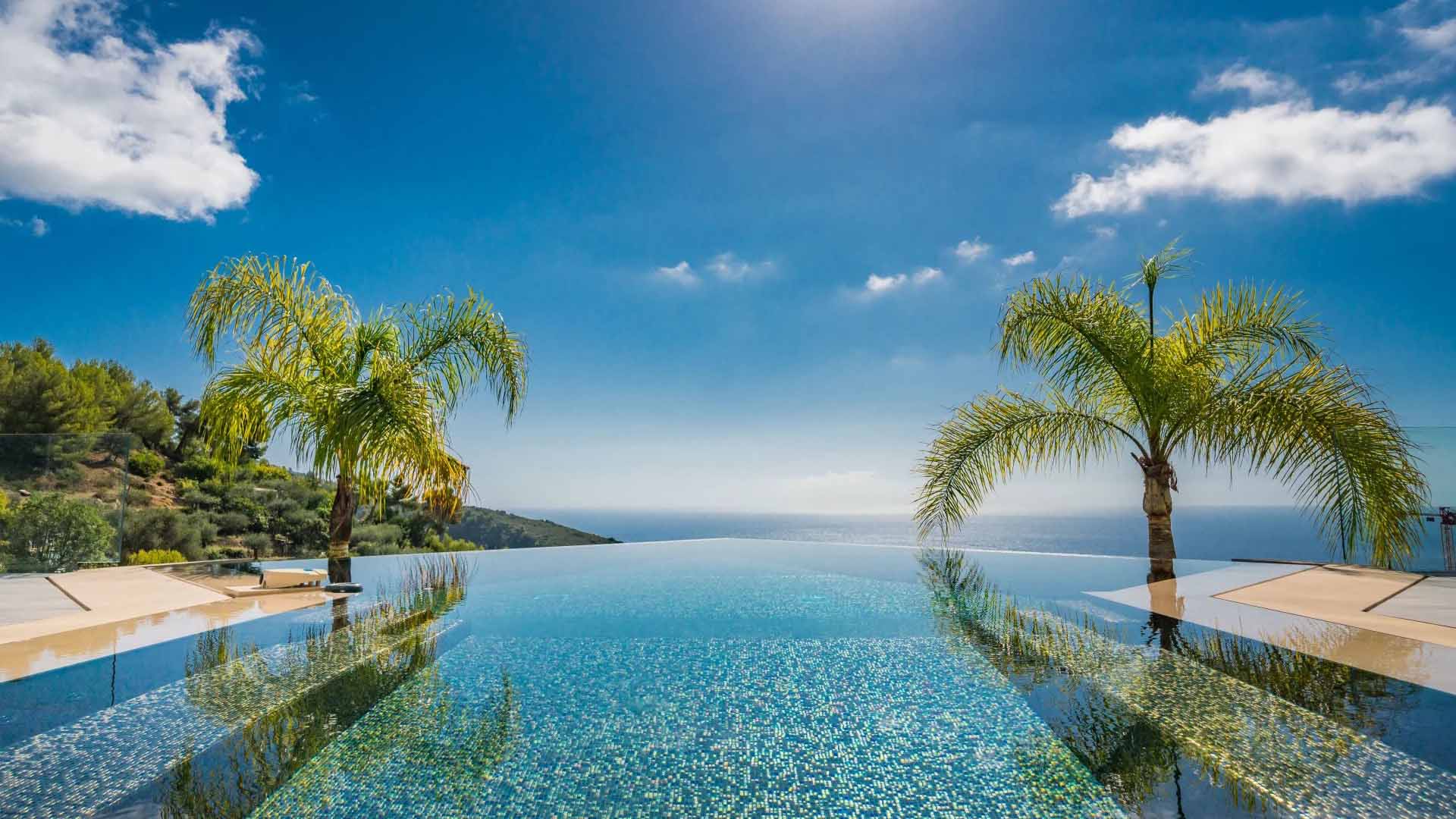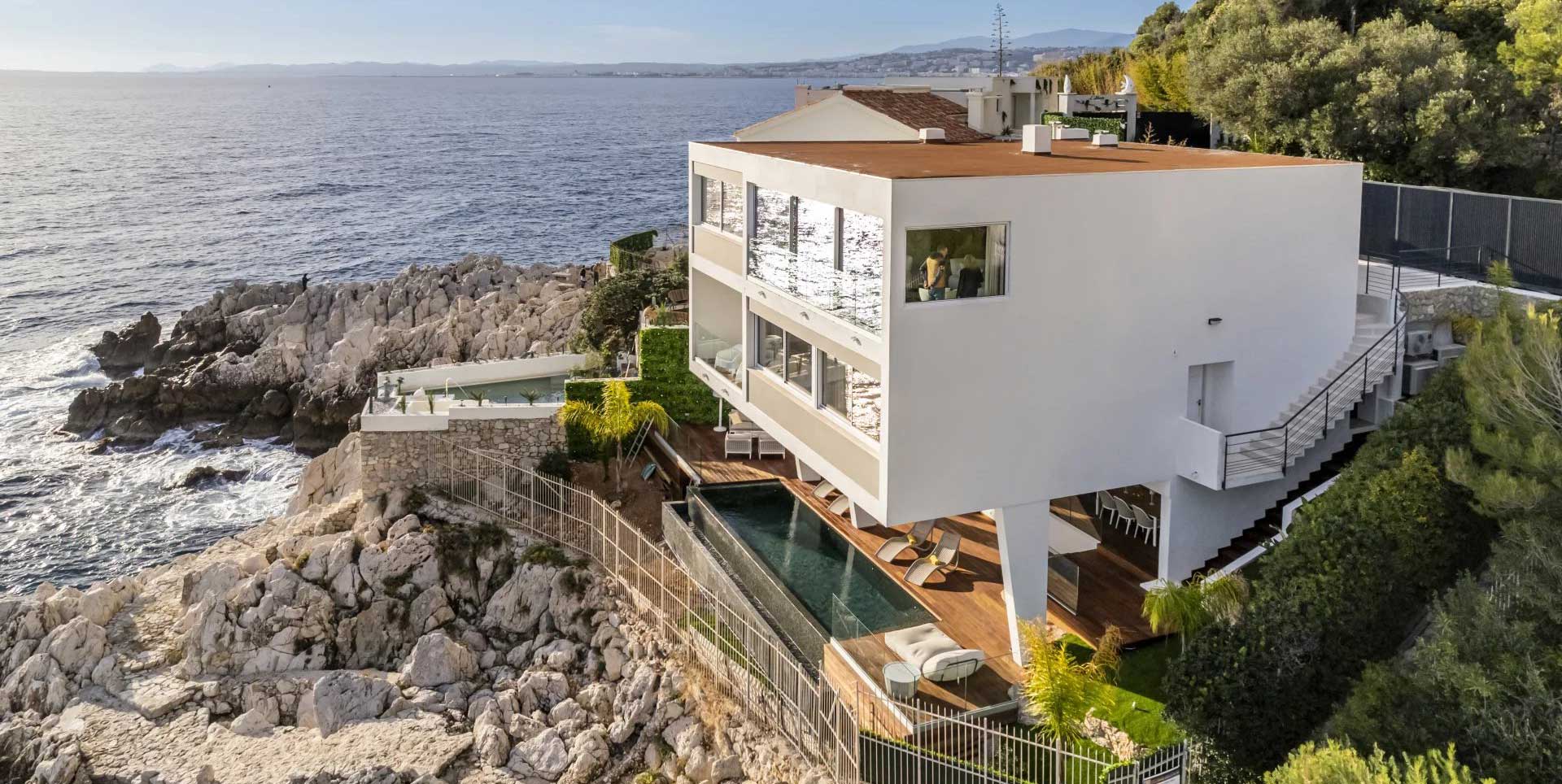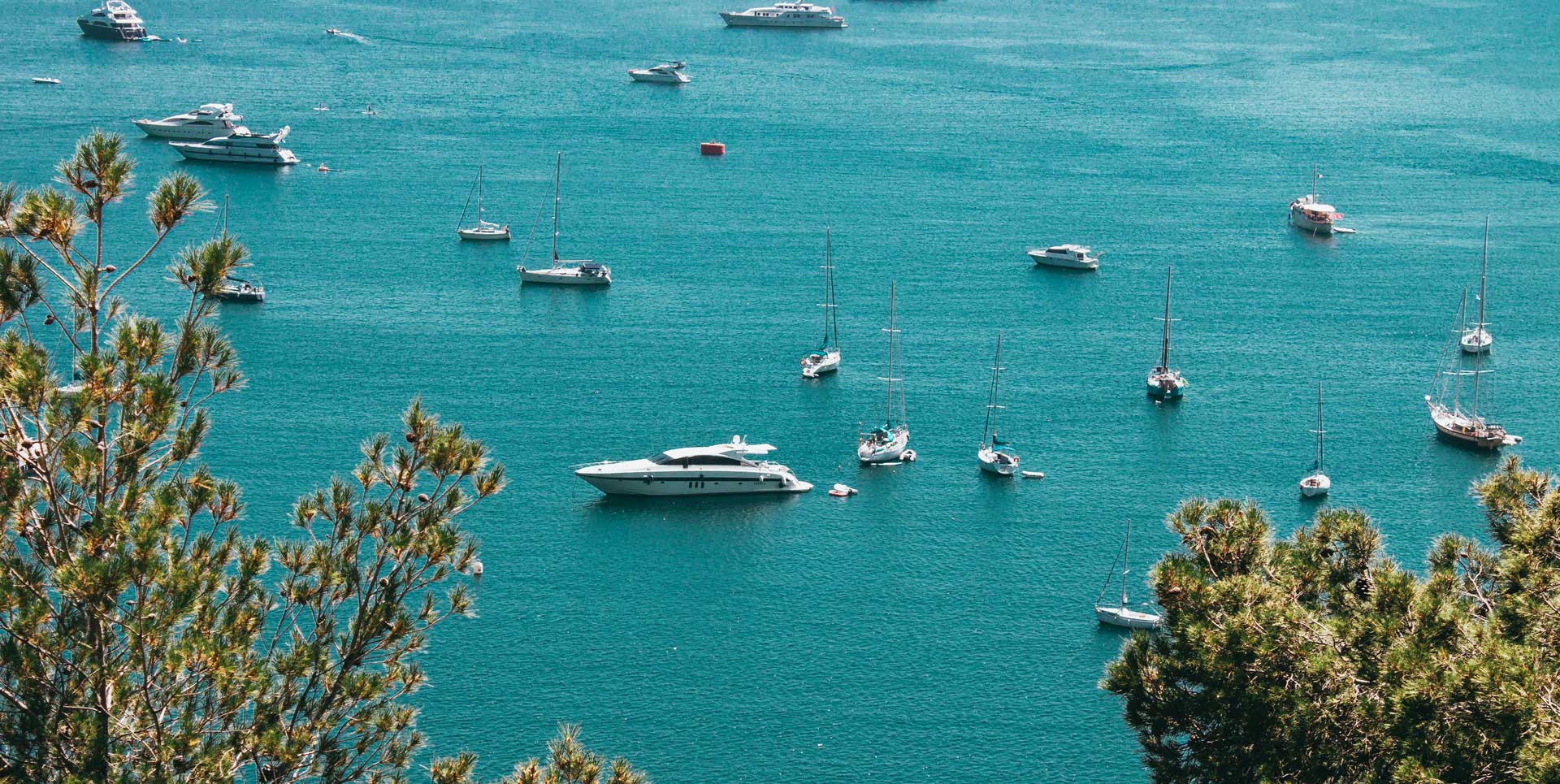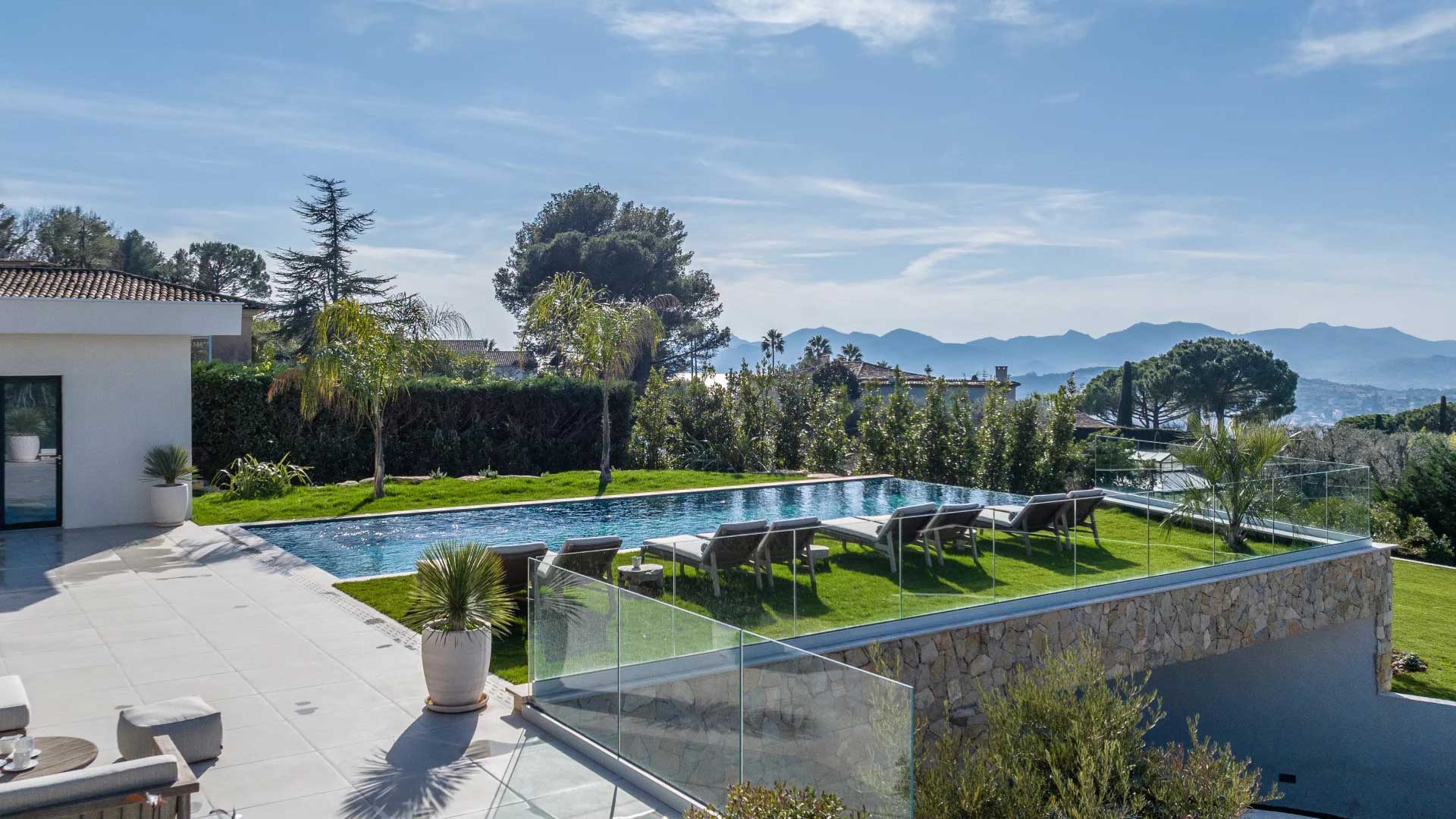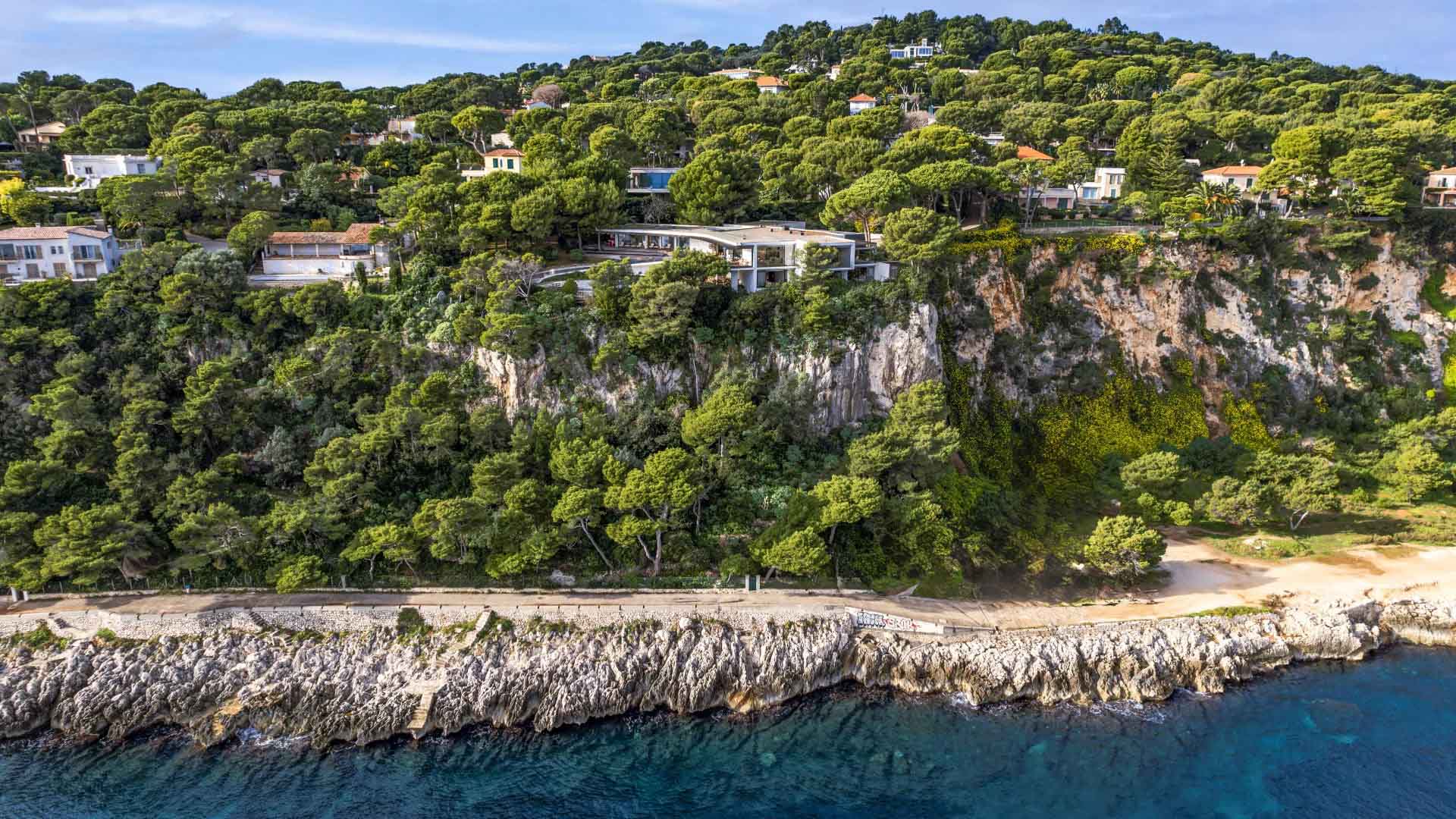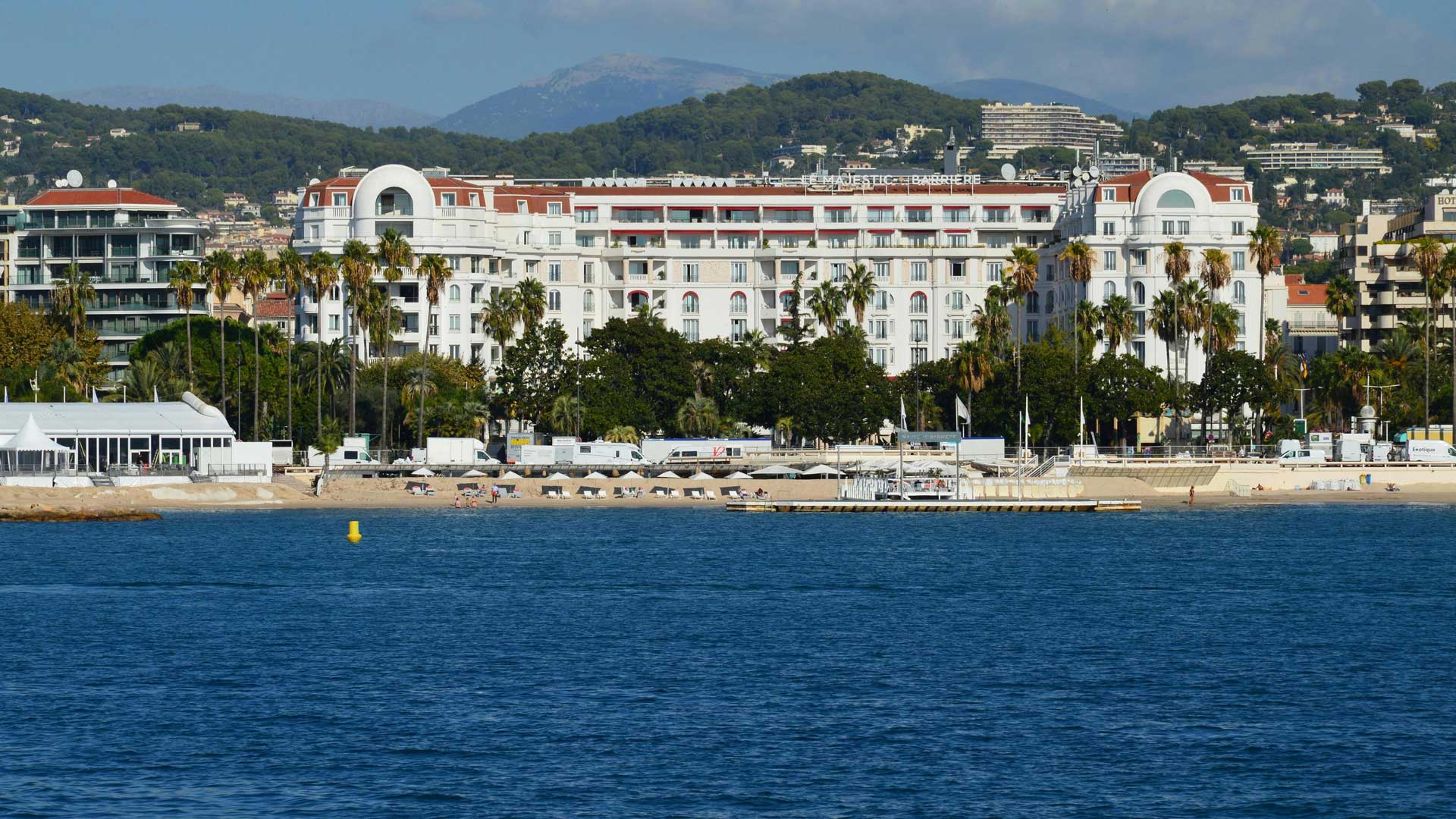L’architecture contemporaine échappe aux définitions simplistes, précisément parce qu’elle regroupe des approches philosophiquement opposées. Entre minimalisme japonais et brutalisme méditerranéen, on trouve quelque part la high-tech britannique et l’organicisme scandinave. Il y en a tant d’autres, chaque courant proposant sa vision de l’habitat moderne. Une diversité qui enrichit le marché immobilier haut de gamme, où les acquéreurs recherchent avec nous des créations qui correspondent à leur vision personnelle de la modernité.
Douglas Elliman France référence régulièrement ces créations architecturales dans son portefeuille de villa contemporaine à vendre. Notre position sur le marché nous permet également d’observer l’évolution des tendances, et la manière dont certains courants s’imposent durablement… tandis que d’autres restent des expérimentations éphémères.
Les familles de matériaux et leurs philosophies
L’architecture contemporaine se structure autour de trois grandes approches matérielles. Chaque approche du matériau repose sur une philosophie de l’habitat très particulière.
Le courant minéral privilégie le béton brut, la pierre massive et les associe à des degrés différents avec le verre structurel. Ces réalisations sont souvent monumentales, on assume quelque part une “présence” dans le paysage. Les villas de Marc Barani sur la Côte d’Azur sont un condensé parfait de cette approche : béton matricé en façade, sols en pierre de Cassis, menuiseries en acier galvanisé. L’ensemble forme des volumes sculpturaux qui dialoguent en quelque sorte avec la roche méditerranéenne. Cette architecture demande une maîtrise parfaite du coulage du béton et des entreprises spécialisées dans le béton architectonique.
Le courant bio-sourcé utilise le bois lamellé-collé (CLT), la terre crue stabilisée, les isolants en fibre de bois. Ces matériaux s’assemblent selon des techniques anciennes savamment revisitées : tenons-mortaises assistés par commande numérique, pisé projeté, charpentes en gridshell, etc. Les réalisations de l’agence Tectoniques près de Lyon, par exemple, montrent comment ces matériaux créent des ambiances chaleureuses tout en atteignant une performance thermique passive remarquable.
Le courant high-tech quant à lui exploite davantage les composites, l’acier inoxydable, les verres électrochromes comme matériaux de prédilection. Les façades deviennent des peaux intelligentes qui réagissent à leur environnement :
- Brise-soleil en aluminium anodisé pilotés par capteurs solaires
- Vitrages à opacification variable commandés par domotique
- Panneaux photovoltaïques intégrés architecturalement
- Membranes ETFE (éthylène tétrafluoroéthylène) pour les couvertures translucides
Ces trois approches ne s’excluent pas mutuellement, loin de là. On observe régulièrement des biens mélangeant les philosophies. Et les architectes les plus intéressants les hybrident volontiers : structure béton habillée de bois, façades high-tech sur ossature bio-sourcée. C’est dans ces métissages que naissent des créations magnifiquement abouties.
Configurations spatiales : trois écoles de pensée
Nous avons commencé par parler de matériaux, mais l’organisation intérieure des villas contemporaines suit aussi trois logiques distinctes. Chacune vise à proposer une expérience spatiale spécifique.
L’école de la transparence totale postule que l’on doit supprimer toute cloison non structurelle. Un unique volume fluide, modulé par des différences de niveaux et des meubles-cloisons. Cette approche est inspirée des case study houses californiennes, et elle convient, il faut le dire, aux climats doux et aux modes de vie décontractés. Les villas de l’agence Saota, bien que sud-africaines, influencent ce courant en France avec leurs espaces de 200 m² sans séparation, structurés uniquement par des îlots fonctionnels.
L’école de la cellularité flexible maintient que les espaces doivent être distincts, mais transformables. Des cloisons coulissantes de grande dimension – parfois 4 mètres de hauteur sur 6 de largeur – permettent de reconfigurer l’espace selon les moments et les humeurs de saison. Le salon devient salle de réception, les chambres d’amis se transforment en bureaux. Cette approche, développée par les architectes japonais comme Shigeru Ban pour des bâtiments de réception, séduit une clientèle qui alterne vie familiale intime et réceptions professionnelles.
L’école de la stratification programmatique organise la villa en strates fonctionnelles superposées, comme son nom le suggère bien :
- Niveau jardin : espaces techniques, cave à vin, salle de sport
- Niveau jour : réception, cuisine, terrasses
- Niveau nuit : suites, espaces intimes
- Niveau belvédère : bureau, atelier, solarium
Chaque niveau fonctionne de manière autonome avec ses circulations et ses terrasses. Cette organisation, popularisée par les concepteurs hollandais de l’OMA (Office for Metropolitan Architecture), convient aux terrains en pente et aux familles nombreuses, avec plusieurs générations réunies.
Approches environnementales : du cosmétique au radical
Avec l’intégration de l’environnementale, on observe trois niveaux d’engagement. En clair, du plus superficiel au plus radical.
Le bioclimatisme d’optimisation ajuste l’orientation et les ouvertures, mais sans remettre en cause l’architecture. Débords de toiture calculés, brise-soleil orientables, ventilation traversante : ces dispositifs améliorent le confort sans transformer fondamentalement le projet. La plupart des villas contemporaines à vendre intègrent aujourd’hui ce niveau minimal d’adaptation climatique.
Le bioclimatisme intégré fait du climat un élément générateur même du projet. Les maisons-serres de Lacaton & Vassal sont un condensé de cette approche : une double peau de polycarbonate crée une zone tampon thermique, les espaces de vie migrent selon les saisons entre intérieur protégé et jardin d’hiver. Les murs trombes, les puits canadiens, les toitures réservoirs participent activement à la régulation thermique.
L’architecture régénérative vise l’impact positif sur l’environnement. Au-delà de la neutralité carbone, ces projets produisent plus d’énergie qu’ils n’en consomment, traitent leurs eaux usées par phytoépuration, créent des corridors écologiques :
- Façades dépolluantes en dioxyde de titane
- Jardins verticaux abritant la biodiversité locale
- Récupération intégrale des eaux pluviales pour l’irrigation
- Production alimentaire en permaculture intégrée
- Etc.
Cette approche radicale reste pour l’heure minoritaire. Mais elle commence à influencer l’ensemble du secteur. Les acquéreurs les plus engagés y voient l’anticipation des normes futures et une forme de responsabilité environnementale.
Quelle est la valeur du contemporain dans le patrimoine immobilier ?
Le marché valorise différemment ces approches architecturales, c’est une évidence. Les créations minérales signées par des architectes reconnus prennent de la valeur davantage comme des œuvres d’art. Les réalisations biosourcées séduisent une clientèle sensible au bien-être et à l’écologie. Les villas high-techs attirent les amateurs de technologie, mais elles nécessitent des mises à jour régulières.
Douglas Elliman France observe que les créations les plus pérennes combinent signature architecturale forte, qualité de réalisation irréprochable et adaptabilité aux évolutions des modes de vie. Ces biens, régulièrement présents dans notre portefeuille, trouvent rapidement acquéreur auprès d’une clientèle internationale sensible à l’innovation architecturale.
L’architecture contemporaine représente désormais une part significative du marché haut de gamme. Loin d’être une mode passagère, elle répond aux aspirations d’une génération qui souhaite habiter des espaces en phase avec son époque, sans renoncer au confort ni à l’élégance.
Questions fréquentes sur l’architecture contemporaine
Qu’est-ce qui définit vraiment l’architecture contemporaine ?
L’architecture contemporaine se caractérise moins par un style unique que par des principes : innovation technique, relation repensée entre intérieur et extérieur, intégration environnementale, flexibilité des espaces. Chaque architecte interprète ces principes selon sa culture et sa philosophie, créant cette diversité qui enrichit le paysage architectural actuel.
Une maison contemporaine coûte-t-elle plus cher qu’une construction traditionnelle ?
Le surcoût dépend du niveau d’ambition architectural. Une villa minimaliste bien conçue peut coûter le même prix qu’une construction traditionnelle de standing. En revanche, les matériaux innovants, les grandes portées structurelles et les équipements domotiques peuvent majorer significativement le budget. L’économie d’exploitation compense souvent ce surinvestissement initial.
Comment vieillissent les architectures contemporaines ?
Le vieillissement dépend essentiellement de la qualité de conception et de réalisation initiale. Les matériaux nobles – béton matricé, bois massif, pierre naturelle, etc. – se patinent et gagnent en caractère. Les équipements techniques nécessitent un entretien régulier et des mises à jour. Les meilleures réalisations des années 1990 acquièrent aujourd’hui un statut patrimonial.
Peut-on transformer une maison traditionnelle en architecture contemporaine ?
La transformation reste techniquement possible… mais économiquement à confirmer ! Ouvrir les volumes, remplacer les menuiseries, créer des liaisons visuelles : ces interventions lourdes approchent souvent le coût d’une construction neuve. Certains architectes se spécialisent dans ces métamorphoses, créant des dialogues intéressants entre ancien et contemporain.
L’architecture contemporaine est-elle adaptée à tous les environnements ?
Chaque contexte appelle une réponse spécifique. L’architecture contemporaine sait s’effacer dans un site naturel protégé comme s’affirmer en milieu urbain. Les meilleures réalisations sont celles qui dialoguent intelligemment avec leur environnement, qu’il soit patrimonial, naturel ou périurbain. Les règlements d’urbanisme encadrent ces insertions, garantissant une certaine harmonie.


